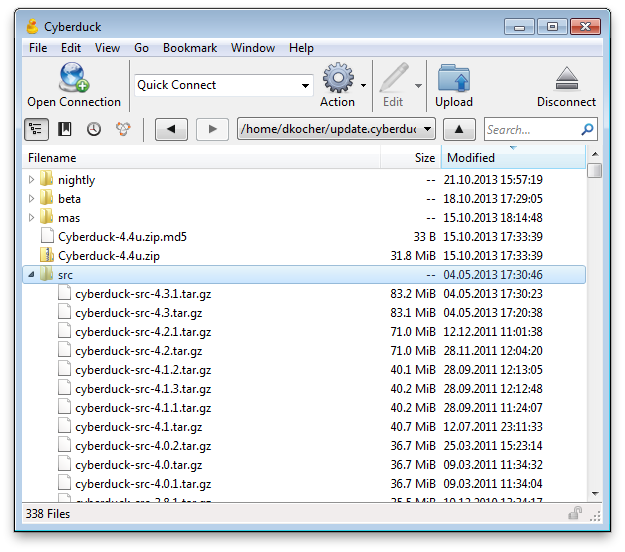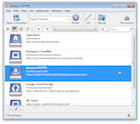

Per-bucket policies are created for an entire bucket and are applied uniformly to every new version of any object in that bucket. Per-object policies can be applied granularly to specific versions of an object at the time of creation, and they can vary within a bucket.

There are two types of approaches from cloud storage providers: per-object policies and per-bucket policies. There is never a time when a backup depends on an out-of-policy file while preserving forever-incremental backups. This process ensures that customers always have immutable backups with complete point-in-time restores. Retrospect will back up every file every four weeks, regardless of whether it changed, because it needs to keep those files in the ransomware protection’s rolling window. Let’s say you back up every week and you set the retention policy for 4 weeks. The consequence of this change is Retrospect will back up any file that is not protected in an immutable backup.
Wasabi cyberduck full#
The first backup is a full backup and every subsequent backup is called an incremental backup.

Retrospect Backup uses ProactiveAI for policy-driven scheduling and forever-incremental backup technology to minimize backup sizes while ensuring a point-in-time restore. Let’s dive into the technical details.įorever-Incremental Backup’s Rolling Window However, there is a lot of functionality underneath that checkbox to create immutable backups. Retrospect Backup - Immutable Retention Policy There is a single checkbox in the user interface to enable it and a number of days to specify: Retrospect utilizes Object Lock technology in major cloud storage providers to set a retention policy for cloud backups to ensure no one, not even the root user, can delete them during the retention window.Ĭreating an immutable backup set with Retrospect Backup is easy. Retrospect was one of the first data protection solutions to add ransomware protection using immutable backups: “Retrospect Backup 18: Ransomware Protection”. You can think of this as a virtual air-gap in the cloud because there is no way, barring to close the account, to delete that file before the retention date is passed. This lock is a retention policy for a specific version of a file that is locked from changes from every user, including the administrator. Because cloud storage providers like Amazon S3 control the API, they can add features like Object Lock. There is no policy to say that no one, not even the administrator, can change this file for a set amount of time.Ĭloud Object Lock does just that. When ransomware gets the administrative credentials, it has full access too. The problem for companies is that their storage is always connected with full access for admins. Unsplash - is a huge global threat to businesses around the world.


 0 kommentar(er)
0 kommentar(er)
